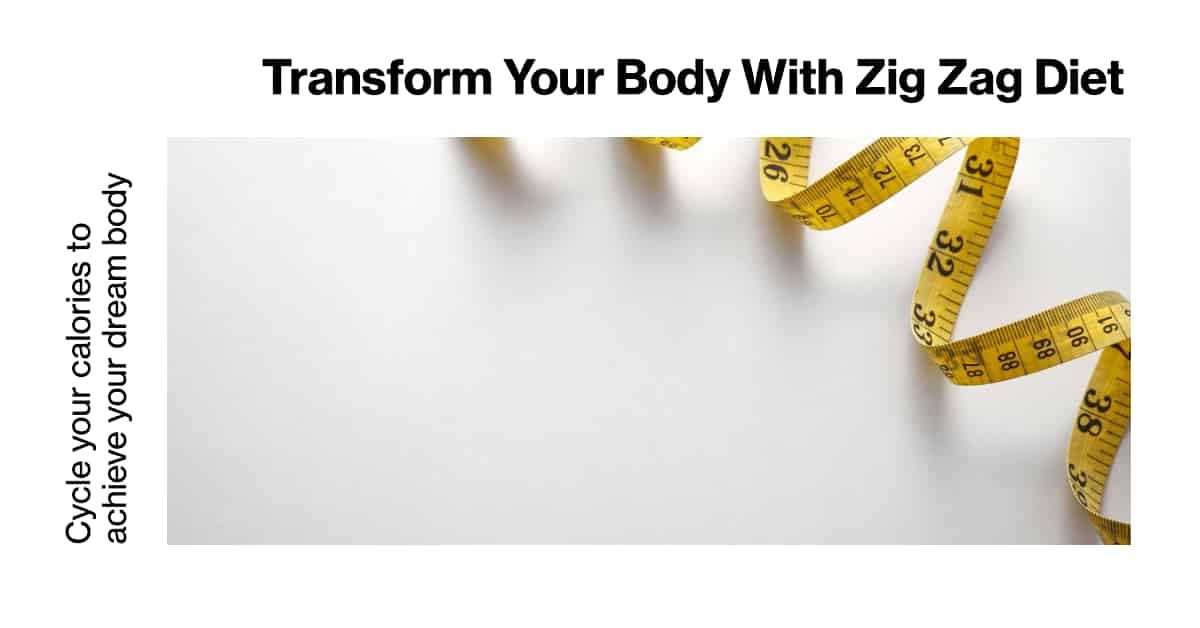Looking for a new way to approach weight loss and muscle gain? The Zig Zag Diet might be the answer. By varying your daily calorie intake, this diet aims to boost your metabolism and optimize results. This guide explains the science, benefits, and how to implement the Zig Zag Diet.
What is the Zig Zag Diet?
The Zig Zag Diet, also known as calorie cycling, is a nutritional strategy that involves alternating between high-calorie and low-calorie days. The idea is to ‘zig zag’ your caloric intake to prevent your body from adapting to a set number of calories. By doing so, you can potentially accelerate fat loss, improve muscle gain, and avoid weight loss plateaus.
Science Behind the Zig Zag Diet
Several studies have shown that varying caloric intake can have a positive impact on weight loss and muscle gain. One study found that athletes who followed a calorie cycling regimen experienced less muscle loss compared to those on a constant caloric deficit. Another study showed that calorie cycling can help preserve metabolic rate during weight loss, making it easier to maintain the lost weight.
How to Implement the Zig Zag Diet
Step 1: Calculate Your Caloric Needs
The first step is to determine your daily caloric needs. Our Zig-Zag Diet Calculator is a specialized tool designed to help you optimize your caloric intake for better weight management and performance. Unlike traditional diet plans that maintain a constant caloric intake, the Zig-Zag Diet varies your daily calories to keep your metabolism active and responsive.
Step 2: Plan Your High and Low-Calorie Days
Once you know your caloric needs, plan your high and low-calorie days. A common approach is to have three low-calorie days and four high-calorie days per week.
Step 3: Choose Nutrient-Dense Foods
Regardless of whether it’s a high or low-calorie day, focus on nutrient-dense foods. Opt for lean proteins, whole grains, fruits, and vegetables.
Step 4: Monitor and Adjust
Keep track of your progress. If you’re not seeing the results you want, you may need to adjust your caloric intake or the ratio of high to low-calorie days.
7-day Zig Zag Diet meal plan
Day 1: High-Calorie Day (2000 calories)
- Breakfast: Scrambled eggs with spinach and whole-grain toast
- Lunch: Grilled chicken salad with a variety of veggies and olive oil dressing
- Dinner: Salmon with quinoa and steamed broccoli
- Snacks: Greek yogurt, almonds
Day 2: Low-Calorie Day (1200 calories)
- Breakfast: Smoothie with banana, protein powder, and almond milk
- Lunch: Tuna salad with leafy greens
- Dinner: Stir-fried tofu with vegetables
- Snacks: Carrot sticks, apple slices
Day 3: Medium-Calorie Day (1600 calories)
- Breakfast: Overnight oats with berries
- Lunch: Turkey sandwich on whole-grain bread
- Dinner: Beef stir-fry with brown rice
- Snacks: Cottage cheese, rice cakes
Day 4: High-Calorie Day (2000 calories)
- Breakfast: Pancakes with maple syrup and fresh fruit
- Lunch: Chicken Caesar salad
- Dinner: Spaghetti with meatballs and a side salad
- Snacks: Trail mix, dark chocolate
Day 5: Low-Calorie Day (1200 calories)
- Breakfast: Green smoothie with spinach, apple, and cucumber
- Lunch: Lentil soup
- Dinner: Grilled chicken with asparagus
- Snacks: Celery sticks, a small orange
Day 6: Medium-Calorie Day (1600 calories)
- Breakfast: Yogurt parfait with granola and mixed berries
- Lunch: Turkey club sandwich with a side of sweet potato fries
- Dinner: Baked cod with a side of roasted vegetables
- Snacks: Rice cakes, a banana
Day 7: High-Calorie Day (2000 calories)
- Breakfast: Breakfast burrito with eggs, cheese, and avocado
- Lunch: BBQ chicken with coleslaw and cornbread
- Dinner: Steak with mashed potatoes and green beans
- Snacks: Cheese and crackers, a pear
Benefits of the Zig Zag Diet
- Metabolic Boost: Varying caloric intake can help prevent metabolic adaptation, making it easier to lose weight.
- Sustainability: The diet allows for high-calorie days, making it more sustainable and less restrictive than constant low-calorie diets.
- Muscle Preservation: The high-calorie days can help preserve muscle mass, especially when protein intake is adequate.
- Nutrient Intake: The flexibility allows for a broader range of foods, potentially leading to better nutrient intake.
- Improved Energy Levels: High-calorie days can replenish glycogen stores, leading to improved energy and workout performance.
- Reduced Hunger: The high-calorie days can help regulate hunger hormones like ghrelin, making low-calorie days more manageable.
- Customizable: The diet can be tailored to individual needs, preferences, and caloric requirements.
- Better Adherence: The variety can make the diet more interesting, potentially leading to better long-term adherence.
- Potential for Fat Loss: By cycling between calorie deficits and maintenance, the diet aims to promote fat loss while minimizing muscle loss.
Risks associated with the zig zag diet
- Nutritional Imbalance: The diet’s fluctuating caloric intake could lead to nutritional deficiencies if not carefully planned.
- Overeating Risk: On high-calorie days, there’s a risk of overeating, which could negate the benefits of the low-calorie days.
- Not Suitable for Everyone: People with certain medical conditions, like diabetes, may find it challenging to adapt to the fluctuating caloric intake.
- Potential for Weight Gain: If not properly managed, the high-calorie days could lead to weight gain over time.
- Psychological Stress: Constantly changing your caloric intake can be mentally taxing and may not be sustainable for everyone.
- Exercise Impact: The diet may affect your energy levels, which could impact your exercise performance and results.
Conclusion
While the Zig Zag Diet offers a promising approach to weight loss and muscle gain by varying your calories, it’s crucial to approach it with a solid plan and realistic expectations.

